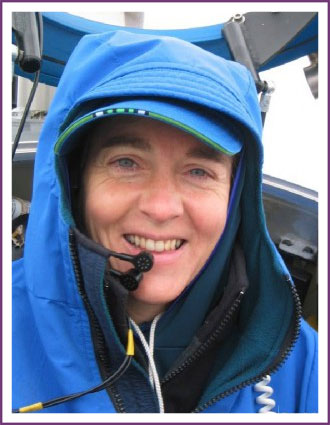MICHELLE RIDGWAY, "Mish"

• Exploration
• Conservation
Inducted: 2018
Deceased: 2018
MICHELLE RIDGWAY, "Mish"
Upon the sudden death of marine scientist, educator and conservationist Michelle Ridgway there was much discussion on social media. One comment, though, seemed to capture them all. It came from former legislator Andrea Doll … “I am mourning the loss of someone greater than life.”
Life-long Alaskan Ridgway was, indeed, a larger than life figure. Whether piloting a submarine to explore the ocean’s largest undersea canyon, helping document a new species of kelp or whale, fighting for marine conservation across Alaska or building the next generation of Alaskan scientists with her marine science camps…she cut a figure that was at once memorable and impactful.
She was happiest underwater— swimming, diving, or piloting a research submarine— being part of the ocean she loved. She used her intimate knowledge of the ocean to become a fierce advocate for sustainable fisheries, clean water, and seafloor protection. As an advisor on several federal committees, she used her marine ecology acumen to scrutinize marine management decisions that many at the table considered from narrower perspectives.
Alaska is fortunate that Ridgway left her imprint on the next generation of ocean scientists. Beginning in 2005, Ridgway collaborated with local conservationists, school districts, and Native entities to develop and deliver week-long intensive Marine Science Camps. She directed more than a dozen marine science camps in Old Harbor, Juneau, Akutan, the Pribilof Islands, and Sitka Alaska.
She used her first PFD check to get SCUBA-certified so she could spend “the rest of my life being a research diver”. Indeed that is what she did, diving on Christmas Day just days before her death. Among her most memorable dives, she piloted a solo submarine during the first exploration of Zhemchug Canyon in the Bering Sea.
View Extended Bio